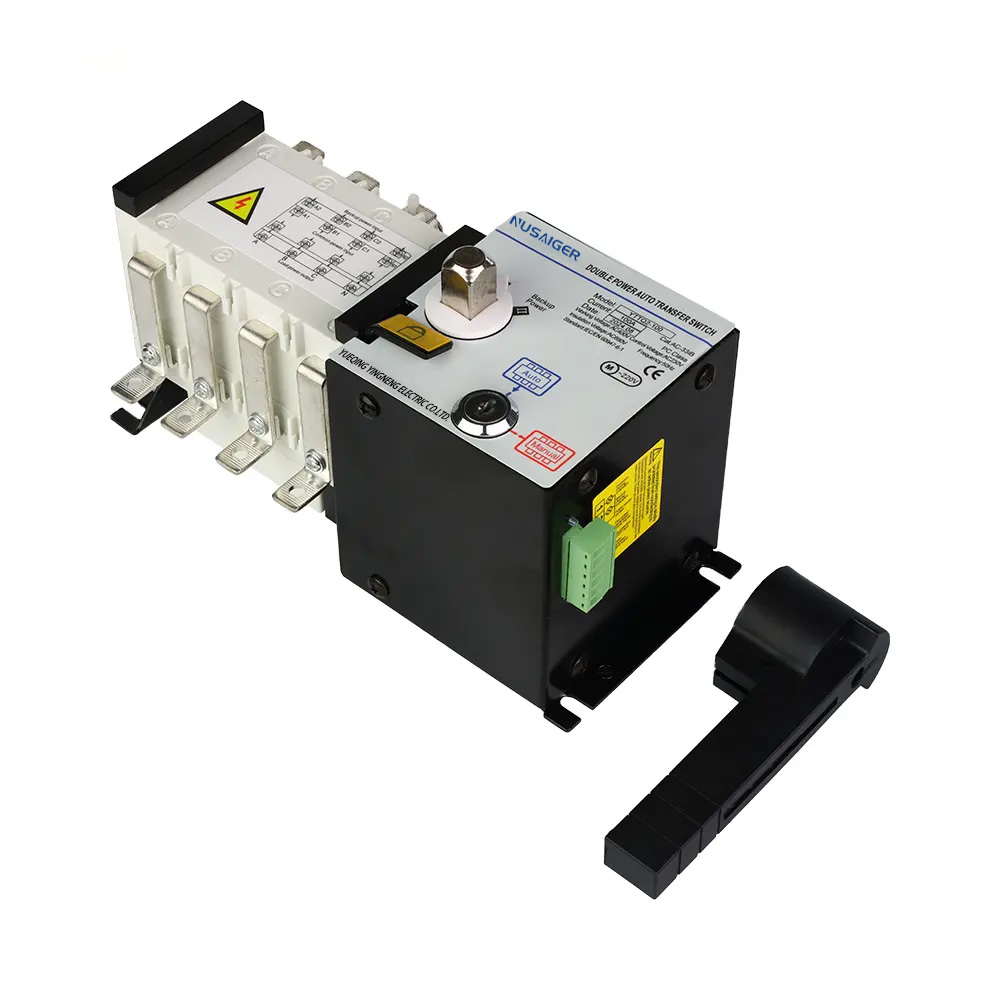Advanced Dual Power Supply Design and Optimization Strategies for Maximum Efficiency
In today’s high-demand industrial and commercial environments, a standard dual power supply system may not be sufficient. Advanced strategies are required to ensure not only reliability but also maximum efficiency and adaptability. This article explores cutting-edge approaches for designing and optimizing dual power supply systems for critical operations.
1. Introduction: The Need for Advanced Design
Traditional dual power supply systems provide basic redundancy. However, as facilities increase in complexity, energy consumption rises, and operational demands become stricter, advanced design techniques are essential. Optimized systems reduce energy waste, improve reliability, integrate smart controls, and enable predictive maintenance for long-term efficiency.
2. Comprehensive Load Analysis
Advanced systems begin with detailed load analysis:
- Peak Load Assessment: Identify the maximum load your facility may experience.
- Load Segmentation: Separate critical and non-critical loads for better control.
- Dynamic Load Profiling: Use historical data to predict load variations and seasonal peaks.
- Future Growth Considerations: Plan for expansion without system overhauls.
3. Optimized ATS Selection and Configuration
- Smart ATS: Integration with IoT sensors allows real-time monitoring of voltage, current, and temperature.
- Closed vs Open Transition: Closed transition is preferred for sensitive electronics to prevent any power interruption.
- Static vs Electromechanical: Static ATS ensures near-instantaneous switching and higher reliability.
- Redundancy: Dual ATS configurations can provide additional reliability in high-demand systems.
4. Energy-Efficient Generator Strategies
Generators are often the largest energy consumers in backup systems. Advanced strategies include:
- Variable Speed Generators: Adjust engine speed according to load to improve fuel efficiency.
- Hybrid Generator Integration: Combine with renewable energy sources like solar or wind.
- Automated Load Sharing: Distribute loads among multiple generators to optimize efficiency.
- Scheduled Testing: Test generators at off-peak hours to minimize operational costs.
5. UPS Integration for Enhanced Reliability
- Use modular UPS systems to allow scalability and easy maintenance.
- Integrate with energy storage solutions like lithium-ion batteries for longer backup duration.
- Advanced monitoring for battery health, temperature, and charge cycles.
- Seamless transition with ATS ensures zero downtime for critical loads.
6. Hybrid Energy Solutions
Hybrid systems combine traditional power sources with renewables:
- Solar panels integrated with ATS for daytime load support.
- Wind turbines for remote or high-energy-demand facilities.
- Battery storage systems to bridge intermittent renewable generation.
- Energy management software to optimize source selection and load distribution.
7. Predictive Maintenance and Monitoring
Preventive maintenance alone is no longer sufficient. Predictive strategies include:
- IoT-enabled sensors on ATS, generators, and UPS units.
- Real-time monitoring of voltage, current, temperature, and vibration.
- AI algorithms to detect anomalies before failures occur.
- Automated alerts for battery degradation, contact wear, and generator inefficiencies.
- Data analytics for scheduling maintenance and reducing downtime.
8. Load Balancing and Optimization
- Distribute loads intelligently to avoid overloading individual circuits.
- Use smart ATS to dynamically switch non-critical loads to secondary sources.
- Energy-saving schedules for non-critical systems during off-peak hours.
- Reduce fuel and electricity costs while maintaining reliability.
9. Case Study: High-Tech Data Center Optimization
A data center integrated smart ATS with predictive maintenance sensors, modular UPS, and hybrid energy from solar panels. Results included:
- Zero downtime during grid failures.
- 15% reduction in fuel costs for generators.
- Real-time alerts enabled quick response to anomalies.
- Future-proofing for increased server load without additional hardware investment.
10. Safety and Compliance Considerations
- Ensure compliance with IEC, UL, and local electrical codes.
- Proper grounding and surge protection for sensitive electronics.
- Regular inspection of cabling, ATS contacts, and generator components.
- Emergency shutdown procedures and signage for personnel safety.
11. Emerging Technologies
- AI-driven predictive maintenance for ATS, generators, and UPS units.
- Cloud-based monitoring for remote management of multiple facilities.
- Integration with smart grids for energy trading and optimization.
- Advanced battery technologies (solid-state, flow batteries) for longer duration and efficiency.
12. Common Mistakes to Avoid
- Ignoring load growth projections.
- Overlooking integration of renewable energy sources.
- Underestimating the importance of predictive maintenance.
- Choosing ATS without considering closed-transition or static options for critical loads.
- Failing to monitor battery health and generator efficiency.
13. FAQ
- Q1: How can hybrid energy reduce generator fuel consumption?
A: By supplementing load with solar or wind, reducing generator runtime. - Q2: Can predictive maintenance replace preventive maintenance?
A: It complements preventive measures by identifying potential failures early. - Q3: What is modular UPS?
A: A UPS system built in independent modules, allowing scalability and easy replacement. - Q4: How do smart ATS improve efficiency?
A: By dynamically switching loads and monitoring source health, reducing unnecessary transfers. - Q5: Are hybrid systems suitable for all facilities?
A: Yes, but the design should be customized based on load profile and energy source availability.
Conclusion
Advanced dual power supply systems go beyond simple redundancy. By integrating smart ATS, predictive maintenance, energy-efficient generators, modular UPS, and hybrid energy sources, facilities can achieve maximum reliability and efficiency. Future-ready design ensures cost savings, operational resilience, and adaptability to evolving energy demands.



